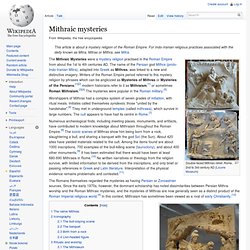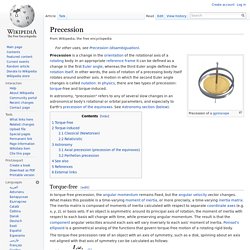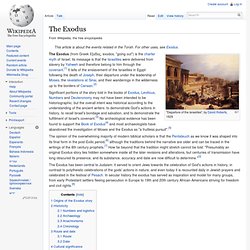

Agnus Dei. A lamb holding a Christian banner is a typical symbol for Agnus Dei.

Although "Lamb of God " refers in Christian teachings to Jesus Christ in his role of the perfect sacrificial offering, Christological arguments dissociate the term from the Old Testament concept of a "scapegoat," which is a person or animal subject to punishment for the sins of others without knowing it or willing it. Christian doctrine holds that Jesus chose to suffer at Calvary as a sign of his full obedience to the will of his Father, as an "agent and servant of God".[2][3] The Lamb of God is thus related to the Paschal Lamb of Passover, which is viewed as foundational and integral to the message of Christianity.[4][5] As a visual motif the lamb has been most often represented since the Middle Ages as a standing haloed lamb with a foreleg cocked "holding" a pennant with a red cross on a white ground, though many other ways of representing it have been used.
Akhenaten. Akhenaten (/ˌækəˈnɑːtən/;[1] also spelled Echnaton,[7] Akhenaton,[8] Ikhnaton,[9] and Khuenaten;[10][11] meaning "Effective for Aten") known before the fifth year of his reign as Amenhotep IV (sometimes given its Greek form, Amenophis IV, and meaning Amun is Satisfied), was a pharaoh of the Eighteenth dynasty of Egypt who ruled for 17 years and died perhaps in 1336 BC or 1334 BC.

He is especially noted for abandoning traditional Egyptian polytheism and introducing worship centered on the Aten, which is sometimes described as monotheistic or henotheistic. An early inscription likens the Aten to the sun as compared to stars, and later official language avoids calling the Aten a god, giving the solar deity a status above mere gods. Akhenaten tried to bring about a departure from traditional religion, yet in the end it would not be accepted. Monotheism. Monotheism characterizes the traditions of Atenism, Babism, the Bahá'í Faith, Cao Dai (Caodaiism), Cheondoism (Cheondogyo), Christianity, Deism, Eckankar, Islam, Judaism, Rastafarianism, Ravidassia religion, Seicho no Ie, Shaivism, Sikhism, Tenrikyo (Tenriism), Vaishnavism, and Zoroastrianism and elements of the belief are discernible in numerous other religions.[4] Origin and development[edit] The word monotheism comes from the Greek μόνος (monos)[5] meaning "single" and θεός (theos)[6] meaning "god".[7] The English term was first used by Henry More (1614–1687).[8]

Polytheism. Polytheism is a religious construct and a type of theism.

Within theism, it contrasts with monotheism, the belief in a singular God. Polytheists do not always worship all the gods equally, but can be henotheists, specializing in the worship of one particular deity. Other polytheists can be kathenotheists, worshiping different deities at different times. Aten. Mithraic mysteries.
Double-faced Mithraic relief.

Rome, 2nd to 3rd century AD (Louvre Museum) The Mithraic Mysteries were a mystery religion practised in the Roman Empire from about the 1st to 4th centuries AD. The name of the Persian god Mithra (proto-Indo-Iranian Mitra), adapted into Greek as Mithras, was linked to a new and distinctive imagery. Writers of the Roman Empire period referred to this mystery religion by phrases which can be anglicized as Mysteries of Mithras or Mysteries of the Persians;[1][2] modern historians refer to it as Mithraism,[1] or sometimes Roman Mithraism.[3][4] The mysteries were popular in the Roman military.[5] The Romans themselves regarded the mysteries as having Persian or Zoroastrian sources. Rock-born Mithras and Mithraic artifacts. The name Mithras[edit] Related deity-names in other languages include Iranian "Mithra" and Sanskrit "Mitra" are believed to come from an Indo-Iranian word mitra meaning "contract, agreement, covenant".[24] Iconography[edit]
Precession. In astronomy, "precession" refers to any of several slow changes in an astronomical body's rotational or orbital parameters, and especially to Earth's precession of the equinoxes.

See Astronomy section (below). Torque-free[edit] The torque-free precession rate of an object with an axis of symmetry, such as a disk, spinning about an axis not aligned with that axis of symmetry can be calculated as follows: The Exodus. Significant portions of the story told in the books of Exodus, Leviticus, Numbers and Deuteronomy may not have been intended to be historiographic, but the overall intent was historical according to the understanding of the ancient writers: to demonstrate God's actions in history, to recall Israel's bondage and salvation, and to demonstrate the fulfillment of Israel's covenant.

No archeological evidence has been found to support the Book of Exodus and most archaeologists have abandoned the investigation of Moses and the Exodus as "a fruitless pursuit". The opinion of the overwhelming majority of modern biblical scholars is that the Pentateuch as we know it was shaped into its final form in the post-Exilic period, although the traditions behind the narrative are older and can be traced in the writings of the 8th century prophets.